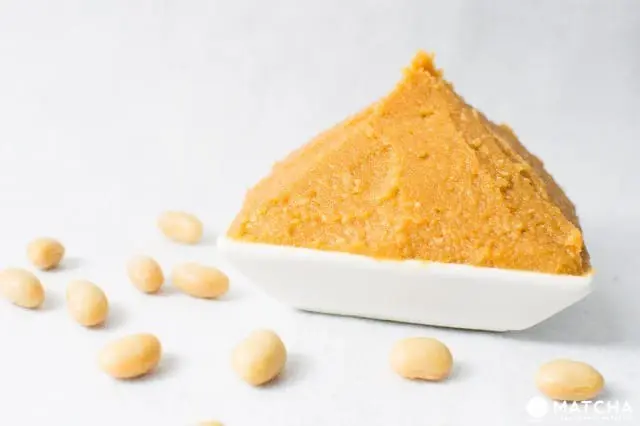Fermented Foods - Japanese Encyclopedia

From seasonings to drinks, Japanese fermented food products hold an important place in the Japanese diet. Today we'll explain about some of these fermented foods including miso, shoyu (soya sauce) and natto (fermented soybeans).
Fermentation is used in order to both preserve food and improve its flavor, and this occurs through various processes including the introduction of micro-organisms. The Japanese climate is suitable for this food processing method, and, as a result, a large number of new foods were born, including miso and natto, that are particular to this country. Japan is known as one of the leading countries for fermented foods, actually.
Today we'll introduce you to some of the main ones found here in Japan.
What Exactly Are Japanese Fermented Foods?

Fermentation is a processing method that is used with traditional foods in all regions of the world.
Because Japan's temperature and humidity are conducive to fermentation, it's possible for a wide assortment of fermented foods to be made in every region of the country. According to sources, some fermented seasonings which later became a prototype for today's miso were already in existence as early as the 8th century. Since then, food products such as miso and shoyu (soy sauce) evolved and developed, allowing present-day fermented foods to exist.
Classic Fermented Seasonings

One distinguishing characteristic of Japanese fermented foods is the use of something called koji.
Koji is a kind of starter that works like a yeast to ferment various kinds of food. The process begins by adding a fermentation culture (koji-kin) to steamed rice, soybeans and grains and the resulting end product is koji, which allows for the production of various foods such as miso, shoyu, vinegar and mirin (cooking wine) among others.
Miso Bean Paste

Miso is a traditional Japanese seasoning. After soybeans have been steamed, they are crushed, then koji and salt are added to this mixture and after a period of fermentation, miso is born.
Depending on the raw ingredients and the kind of fermentation process that's used, the color and the taste can differ greatly. Some of the best-known varieties of miso are white miso with its distinctive umami* flavor, the commonly used light colored miso, and the dark colored red miso.
Miso soup is a common example of food made with miso. Miso and miso soup varies widely from place to place in Japan, so while visiting here, sampling their many different flavors is another enjoyable way to spend your time.
*umami refers to a rich, savory flavor that's often referred to as 'the fifth taste' as it is not sweet, sour, bitter or salty. The flavor is apparently caused by the interaction of glutamates (a kind of amino acid) found in the food, with taste receptors on the tongue.
Shoyu (Soy Sauce)

Shoyu, also known as soy sauce, is a liquid seasoning that's made by a fermentation process in which koji is added to a mixture of soybeans, wheat and salt.
Depending on the production process used, shoyu is broken down into five different types including koikuchi, a commonly used shoyu with a deep umami flavor, usukuchi, a light colored shoyu, and also tamari, which is mostly brewed in the central region (Chubu) of Japan and often used with sushi. Koikuchi is said to be the most general type, accounting for about 80% of Japan's domestic production volume.
In the various regions of Japan there are producers making shoyu particular to that specific area; everything from sweet shoyu all the way up to thick, rich tasting shoyu.
Some shoyu is made specifically for certain kinds of food, such as sashimi (raw fish) shoyu. If you have a chance to visit a Japanese supermarket, by all means head over to the shoyu aisle and look at all the different varieties on display. You're bound to see some unusual ones for the first time.
Vinegar

Vinegar, with its sour and tart flavor, is a seasoning known around the world. Japanese vinegar is a traditional product, made with rice sake as one of its ingredients.
Japanese vinegar is often used as a seasoning when cooking and there are countless varieties to choose from - grain vinegar, black vinegar made from rice and also apple vinegar just to mention a few.
Delicious Foods Made With Fermented Ingredients

In addition to koji, there are many natural micro-organisms used to ferment foods in Japan.
Natto, or fermented soybeans, known for its distinctive aroma and sticky texture, is made by inoculating soybeans with a starter culture called natto bacilli that allows this fermentation process to take place. In the old days, natto was made by putting soybeans together with the natto bacilli and wrapping it in straw that was normally used for drying harvested rice.
Though there are people who don't like natto's aroma and texture, its nutritional value and deep flavor make it a popular staple in the Japanese diet, with many consuming it on a daily basis.

Another category of fermented foods is tsukemono, or Japanese pickles, in which vegetables and seafood are mixed with seasonings and fermented.
After the seasonings are added to the ingredients, the naturally occurring lactic acid bacteria then goes to work and ages the mixture, creating full-flavored pickles.
Both tsukemono and white rice usually appear together at meal times. The saltiness of the tsukemono is a perfect complement for the white rice, so if you haven't already, please give it a try!
Standard Japanese Drinks Are Also Fermented Products

Nihonshu (sake), Japan's classic alcohol, is also a fermented product.

In this fermentation process, koji is added to the starch taken from steamed rice.
At the brewery, various flavors of sake emerge due to differences in ingredients and specialized recipes. If you have the chance, we recommend going to an izakaya, or Japanese-style pub, where you can sample the many kinds of sake.
In Closing

Fermented foods are an indispensable part of the Japanese diet and today we introduced some of them to you. There are an abundance of Japanese seasonings and a wide variety of flavors found in Japanese food, and much of the credit for this can be attributed to the role of fermentation.
While some of you might be reluctant to eat fermented foods due to their characteristic aroma and flavor, once you experience the variety and depth of these foods, you'll surely get hooked. If you happen to encounter fermented foods during your stay in Japan, why not give some a try and make your food experience all the more memorable!
新潟生まれ。事業会社でのマーケティングを経験後、2011年からシンガポールへ移住し、出版社や制作会社で編集に従事。2015年に日本へ帰国しMATCHAのライターに。国内外を旅行する中で見つけた新しい発見を、多くの人とシェアしていきたいです。






































![[Coupon Available] Attention Overseas Winter Sports Fans! Nagano's Sports Depot Has Evolved](https://resources.matcha-jp.com/resize/720x2000/2026/01/05-254819.webp)